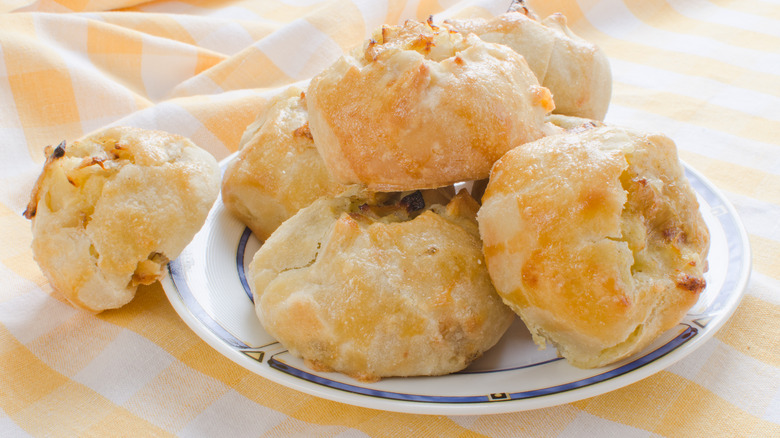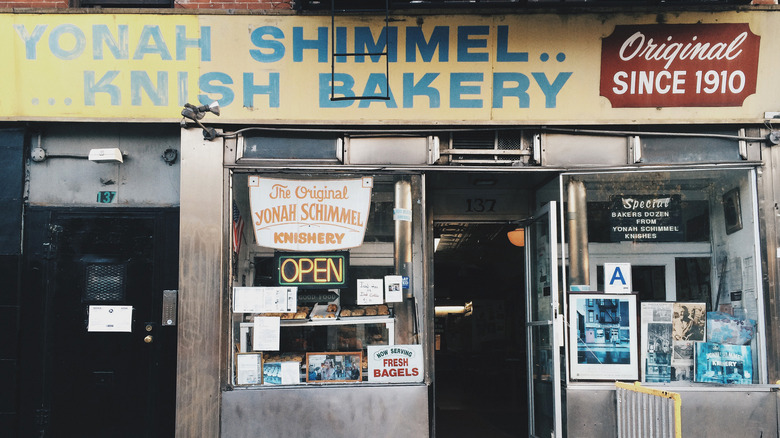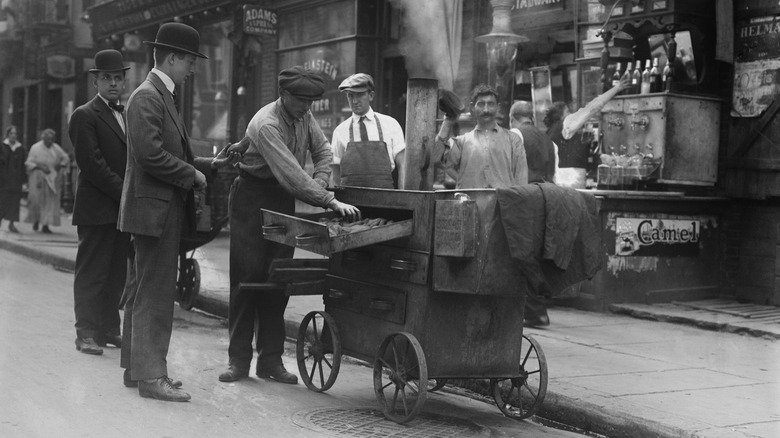How The Knish Became A New York City Staple
Think about New York City. You have a melting pot, probably the greatest melting pot of global cultures in the world, crammed into 304 square miles of pavement and high rises, per the New York Times, all of whom contribute their unique cuisines to the city at large. You have the New York pizza slice, pastrami on rye, bagels and lox, General Tso's chicken, and porterhouse steak (via Devour Tours). The Italians, Eastern European Jews, Chinese, and Irish are just a few of the multitudes of immigrant cultures that have had a major impact on the New York City food scene.
While the foods mentioned have all gone on to become popular staples of the Big Apple, there is another food, one that's been somewhat hidden from history, that has been humbly feeding the masses for decades. It's a creation that's name and origin have deep ties to the Ashkenazi Jews and their immigration to the United States. It's called the knish, and it's helped keep the bellies of New Yorkers full for over 100 years.
The knish comes to New York
Russian, Ukrainian, and Polish Jews all claim the knish as a cultural staple. The word itself, "knish," is a Yiddish derivative of the Ukrainian "knysh" and the Polish "knysz" (via My Jewish Learning). So, what exactly are these humble little snacks? A knish is traditionally made as a ball of mashed potatoes or buckwheat grains, called kasha, that has been wrapped in a thin layer of dough and then baked or deep-fried. This recipe is not set in stone, however, as knish has also been known to be filled with an amalgamation of different ingredients, including pastrami, cheese, mushrooms, or caramelized onions.
When the Jewish immigrants arrived in New York, they, as all their fellows did, brought with them the recipes of their motherland. Taking up residence in the Lower East Side of Manhattan, per the Manhattan Jewish Heritage Initiative, the new arrivals began to make and sell knish to neighborhood residents. The first official knish bakery to appear in New York was in 1910, with the founding of Yonah Schimmel. This bakery brought knish into the mainstream, providing the poor, working-class immigrants with a healthy, affordable meal. Other bakeries, like Shatzkin's in Coney Island and Knish Nosh in Forrest Hills, popped up across the city as the Jewish population began to grow and spread, per Serious Eats.
Success, decline, and resurrection
According to author Lauren Silver, quoted in Serious Eats, the knish reached a level of such success in New York that any political candidate looking to make inroads with the Jewish community would eat knish as a sign of support. Knish was also used as a comedic slang in Jewish comedy ... we'll leave you to guess what. This was the height of achievement for this small ball of dough and filling.
Unfortunately, Yonah Schimmel is one of the last vestiges of that successful beginning. According, again, to Silver, the decline of the knish bakery coincided with the Jews beginning to climb the social and economic ladder. The Jews began to leave the old neighborhoods, drying up the market for knish. However, there are some rumblings of knish making a comeback, as writers like Silver, as well as documentarians and Jewish culture historians, rediscover this little dough ball that helped their ancestors thrive in America (via My Jewish Learning). And if that isn't a New York success story, we don't know what is.


